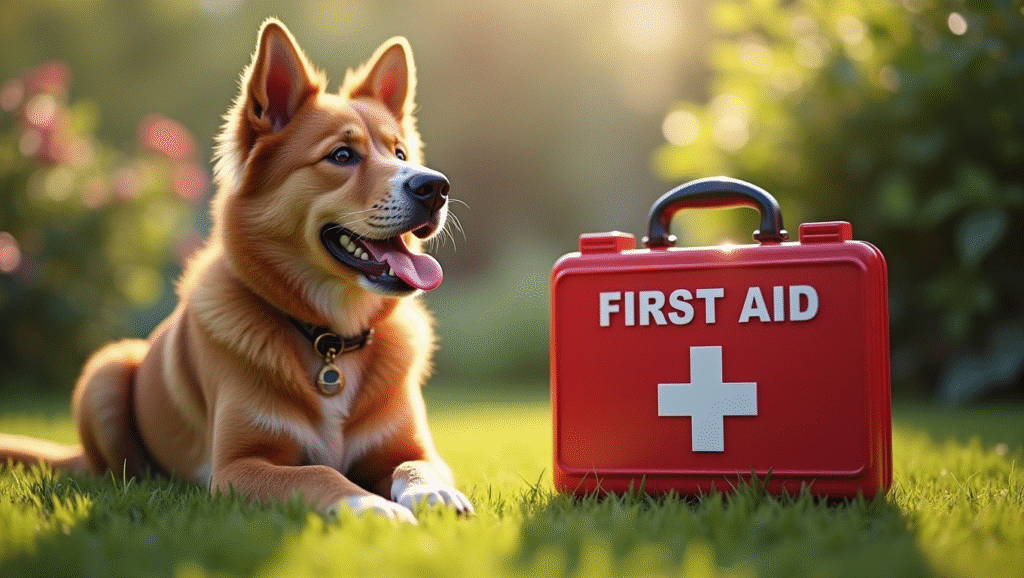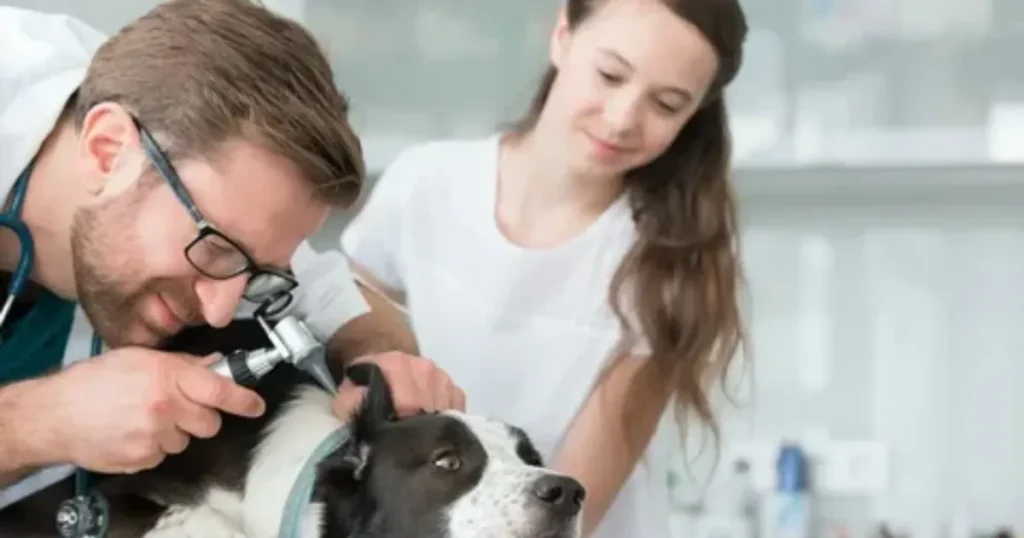Are you ready to learn about the Top 10 Essential Items for a Dog First Aid Kit?
Taking care of your furry friend means being prepared for anything! In this article, you’ll discover what to include in your dog’s first aid kit, basic treatment tips, and how to use the items you have.
Let’s dive into keeping your pet healthy and safe!
Key Takeaways
- Always have a first aid kit for your dog.
- Include bandages, gauze, and tape.
- Don’t forget antiseptic wipes for clean cuts.
- Keep a digital thermometer for checking fevers.
- Store emergency contact numbers for your vet.
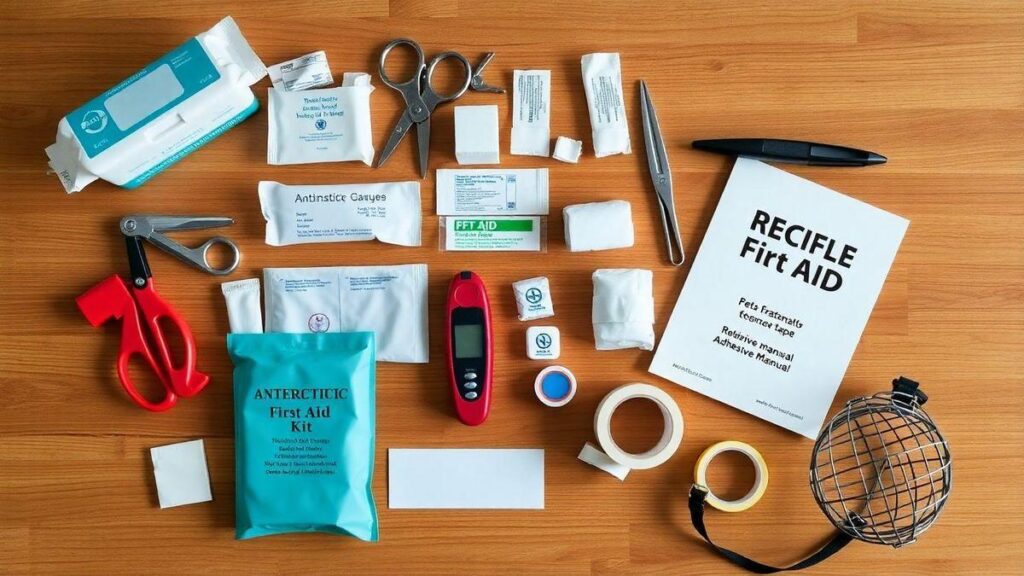
Summary
Why You Need a Dog First Aid Kit
So, you’ve got a furry friend at home, huh? Dogs bring so much joy, but let’s be real – they can also get into trouble. Whether it’s a cut from a sharp rock during a hike or an allergic reaction to something they ate, accidents happen. That’s where a dog first aid kit comes in handy. It’s like having a little insurance policy for your pup’s health.
Imagine you’re out at the park, and your dog decides to chase after a squirrel. In the excitement, they trip and scrape their paw. If you have a first aid kit handy, you can quickly clean the wound and bandage it up before heading to the vet. Having that peace of mind is invaluable.
But it’s not just about being prepared for accidents. A first aid kit can also help you manage minor ailments, like allergies or upset stomachs, until you can get to the vet. Plus, knowing how to treat your dog in an emergency can save you time and money. For more insights on managing emergencies, check out this helpful guide.
What to Include in Your Dog First Aid Kit
Now that you see why having a first aid kit is essential, let’s talk about what you should actually put in it. A well-stocked kit can make all the difference when you need it most. Here’s a breakdown of the must-have items:
- Basic First Aid Supplies: This includes items like gauze pads, adhesive tape, and antiseptic wipes. These are essential for cleaning and dressing wounds.
- Dog-Safe Medications: Just like humans, dogs can benefit from certain medications. Having some basic over-the-counter options can be a lifesaver. For more on this, see these essential tips.
- Thermometer: A digital thermometer is a must-have. Dogs can’t tell you when they’re feeling unwell, so checking their temperature can give you a clue.
- Tweezers: Great for removing splinters or ticks. Trust me, you don’t want to be fumbling around when your dog has a tick embedded in their skin.
- Muzzle: It might seem odd, but a muzzle can come in handy if your dog is in pain and might bite. It’s better to be safe than sorry.
- Elastic Bandage: This can be used to wrap injuries or support sprains. Just make sure it’s not too tight!
- Emergency Blanket: These are lightweight and can help keep your dog warm in case of shock or injury.
- Pet First Aid Manual: Having a guide can be super helpful. It’ll give you quick tips on how to handle various situations, just like this one.
- Leash and Collar: If you need to transport your dog, having a leash and collar ready is essential.
- Contact Information: Keep a list of your vet’s contact information and any emergency animal clinics nearby. You never know when you might need it!
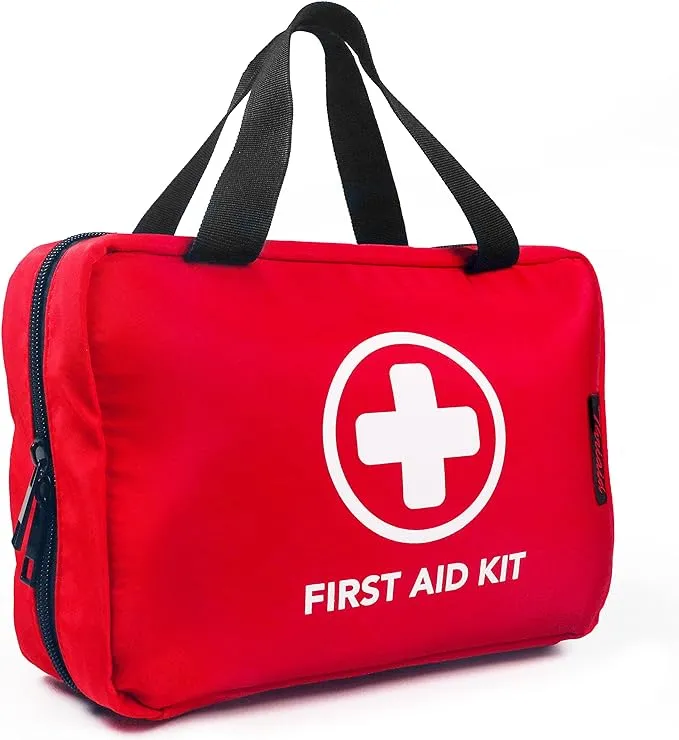
Top 10 Essential Items for a Dog First Aid Kit
Alright, let’s dive deeper into these essential items. Here’s the nitty-gritty on why each one is important and how to use them:
- Gauze Pads: Your go-to for covering wounds. They’re absorbent and help keep the area clean. Change them regularly to prevent infection.
- Adhesive Tape: Use this to secure your gauze pads. Make sure it’s strong enough to hold but gentle enough not to irritate your dog’s skin.
- Antiseptic Wipes: Key for cleaning wounds before you bandage them. Look for wipes that are safe for pets, as some human products can be harmful.
- Dog-Safe Medications: Always consult your vet before giving any medication. Common options might include antihistamines for allergies or aspirin for pain relief.
- Digital Thermometer: A normal temperature for dogs is around 101 to 102.5 degrees Fahrenheit. If your dog’s temperature is higher or lower, it might be time to call the vet.
- Tweezers: Remove ticks quickly. Grasp the tick as close to your dog’s skin as possible and pull straight out.
- Muzzle: If your dog is in pain, they might not react well to being handled. A muzzle can keep everyone safe while you assess the situation.
- Elastic Bandage: Great for wrapping up sprains or strains. Be careful not to wrap it too tightly, as it can cut off circulation.
- Emergency Blanket: If your dog is injured, they might go into shock. An emergency blanket can help keep their body temperature stable until you get to a vet.
- Pet First Aid Manual: Your quick reference guide. It can help you stay calm and focused when your dog needs help.
Understanding Dog Injury Treatment Basics
Okay, so you’ve got your kit ready, but do you know how to use it? Let’s go over some basic treatment techniques.
First off, always stay calm. Your dog can sense your stress, and it might make them more anxious.
- For Cuts and Scrapes: Clean the area with antiseptic wipes. Apply a gauze pad and secure it with adhesive tape. Change the dressing daily and watch for signs of infection, like swelling or discharge.
- For Sprains: Rest is key. Keep your dog calm and prevent them from using the injured limb. Wrap it with an elastic bandage for support, but again, not too tight!
- For Allergic Reactions: If your dog is itching or swelling, you might need to give them a dog-safe antihistamine. Always check with your vet first.
- For Ticks: Remove them quickly with tweezers. Clean the area afterward and keep an eye on it for a few days.
- For Shock: Wrap your dog in an emergency blanket and keep them warm. Get them to a vet as soon as possible.
How to Use Your Dog First Aid Kit
Now that you know what to include and some basic treatment techniques, let’s talk about how to actually use your first aid kit.
First, make sure your kit is easily accessible. It’s no good if it’s buried under a pile of laundry!
When an emergency happens, take a deep breath. Open your kit and assess the situation. Gather the supplies you need based on what’s going on.
If your dog is bleeding, start with gauze pads and antiseptic wipes. If they have a tick, grab the tweezers. And if they’re in shock, keep that emergency blanket close.
It’s also a good idea to practice using your kit. Familiarize yourself with the items and how they work. You don’t want to be fumbling around in a panic. For more tips on preparation, see this resource.
Keeping Your Pet Emergency Supplies Updated
Having a first aid kit is great, but it’s only effective if it’s stocked and up to date. Regularly check your supplies to make sure everything is in good condition.
- Check Expiration Dates: Medications and antiseptics can expire. Toss out anything that’s past its date and replace it.
- Restock Used Items: If you’ve used something from your kit, replace it right away. You don’t want to be caught without what you need in an emergency.
- Review Your Kit: Every few months, go through your kit and see if there’s anything you want to add or change. Maybe your pup has developed allergies, and you need a new medication.
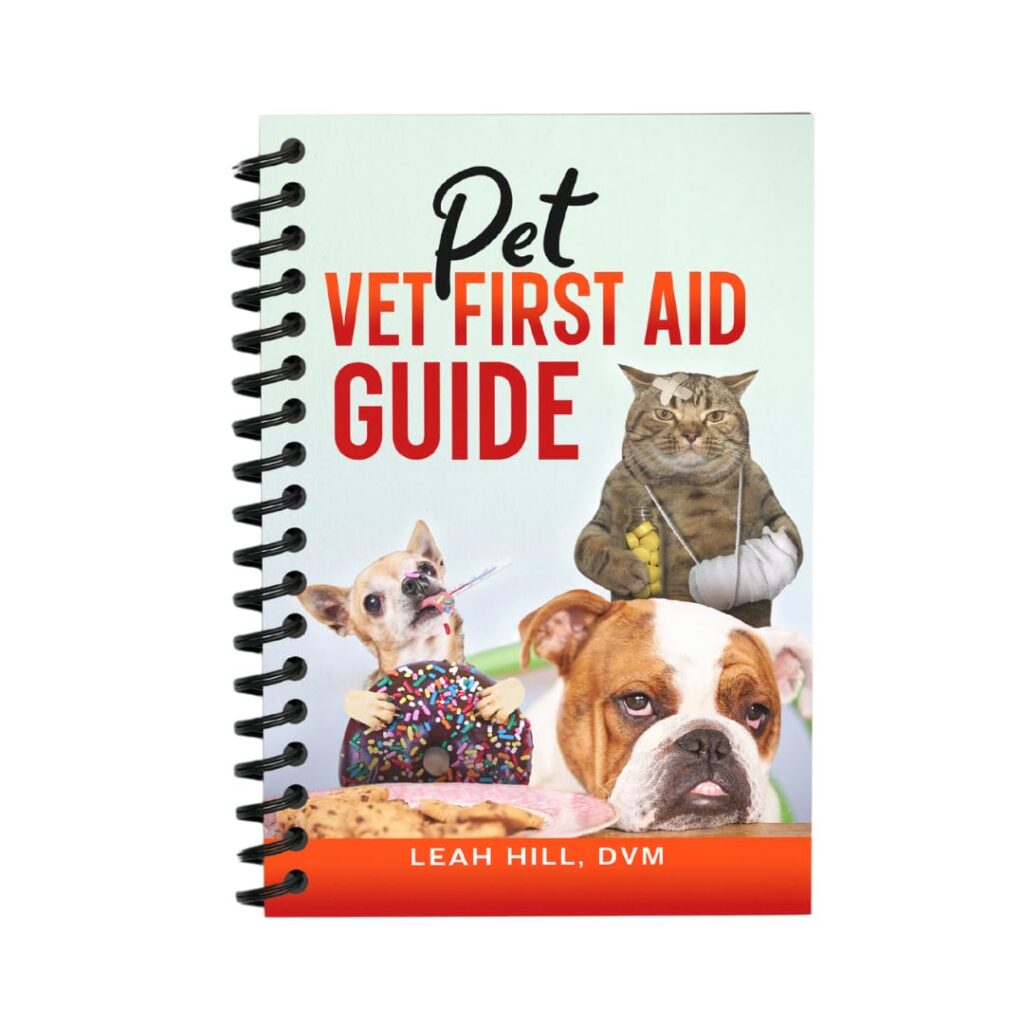
Tips for Canine Health Essentials on the Go
When you’re out and about, it’s a good idea to have some essentials on hand. Here are a few tips for keeping your dog healthy while you’re on the go:
- Travel First Aid Kit: Consider a smaller version of your home kit for trips. Include the basics like gauze, antiseptic wipes, and any medications your dog might need.
- Hydration: Always carry water for your dog, especially on hot days. Dehydration can happen quickly, and it’s no fun for anyone.
- Snacks: Bring along some treats or food. If you’re out for a while, your dog might need a little energy boost.
- Leash and Collar: Always have a leash handy. It’s not just for walks; it can help keep your dog safe in unfamiliar places.
- Emergency Contacts: Keep a list of vets or emergency clinics in the area you’re visiting. You never know when you might need it.
When to Seek Veterinary Emergency Tools
Sometimes, despite your best efforts, you’ll need to get your dog to the vet. Here are some signs that it’s time to seek professional help:
- Severe Bleeding: If the bleeding doesn’t stop after applying pressure, it’s time to see a vet.
- Difficulty Breathing: If your dog is struggling to breathe, don’t wait. Get them to a vet immediately.
- Unconsciousness or Seizures: These are serious signs that something is very wrong. Don’t hesitate to seek help.
- Signs of Pain: If your dog is whining, panting, or acting unusually, it could indicate pain. Better to be safe and have a vet check them out.
- Ingestion of Toxic Substances: If you suspect your dog has eaten something toxic, call your vet or an emergency clinic right away.
Pet Safety Equipment for Every Dog Owner
In addition to a first aid kit, there are other safety items every dog owner should consider. Here are a few essentials:
- Reflective Gear: If you walk your dog at night, reflective collars or leashes can help keep you both safe.
- Pet Seatbelt: If you travel by car, a seatbelt harness can keep your dog secure and prevent distractions.
- Life Jackets: If you take your dog swimming, a life jacket can be a great safety measure, especially for breeds that aren’t strong swimmers.
- Crate or Carrier: These can help keep your dog safe during travel and provide a secure space for them when needed.
- ID Tags: Always make sure your dog has proper identification. In case they get lost, it increases the chances of them being returned to you.
Conclusion
In wrapping things up, having a dog first aid kit is like having a safety net for your furry companion.
It’s all about being prepared for those unexpected moments when your pup might need a helping hand. By stocking your kit with the essential items we discussed and keeping it updated, you’ll be one step ahead in ensuring your dog’s well-being.
Remember, a little preparation can go a long way in keeping your pet happy and healthy. So, don’t wait!
Get that kit ready today, and give yourself the peace of mind that comes with knowing you’re prepared for anything.
For more tips and insights on pet care, be sure to check out more articles at Tech Havela!
Frequently Asked Questions
What is a dog first aid kit?
A dog first aid kit is a collection of items you need to help your furry friend in case of an emergency. It’s like a mini hospital for your pet.
Why do I need a first aid kit for my dog?
Just like you, your dog can get hurt or sick. A first aid kit helps you respond quickly to injuries or health issues. It can save lives!
What are the top 10 essential items for a dog first aid kit?
Some must-have items include:
– Bandages
– Antiseptic wipes
– Gauze
– Tweezers
– Scissors
– A digital thermometer
– Cold pack
– Muzzle
– Adhesive tape
– Emergency contacts
How do I prepare my dog for a first aid emergency?
Start by getting your dog used to being handled. Practice checking their ears, paws, and mouth so they feel calm.
How often should I check my dog’s first aid kit?
Check your kit every few months. Make sure the supplies are fresh and in good condition. Replace any used or expired items.
Can I use human first aid supplies for my dog?
Yes, some human supplies are safe for dogs. But always check with your vet before using anything on your pet.
Where should I keep my dog’s first aid kit?
Store your dog’s first aid kit in a cool, dry place. Keep it somewhere you can grab it quickly in an emergency!
**Sidnir Vieira**
Founder of TechHavela
A passionate pet and tech content creator, helping dog owners across the U.S. make smarter decisions for their furry friends.

